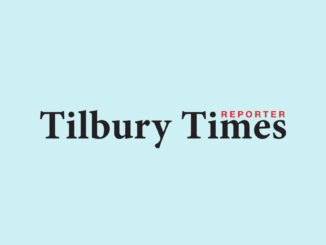
By: Laura Steiner
The Ontario government is enacting a State of Emergency, and a Stay-at-Home Order effective at 12:01 a.m. April 8, 2021. The move is an escalation of the shutdown measures that started April 3, 2021.
“The COVID-19 situation is at a critical stage and we must act quickly and decisively to stay ahead of these deadly new variants,” Premier Doug Ford said. The province released new modelling last week indicating COVID19 variants accounted for the majority of the new cases. Ontario has recorded an increase of 3,215 cases over yesterday.
The variants are affecting younger people. According to the modelling, the B 117 is 2X as likely to put young adults in hospital, and 1.5 times more likely to kill. 504 cases are in Intensive Care Units (ICU) across the province, and 311 are on ventilators. In Halton 25 patients are in ICU across hospitals in Milton, Georgetown, Oakville, and Burlington
The Stay-at-home orders will introduce additional restrictions on retail:
Restricted Retail:
- Non-essential retailers will be completely closed accept for curbside pick-up and delivery between the hours of: 7am-8pm. Delivery to patrons will be restricted to 6am-9pm
- Discount, and Big Box Stores will be limited to essential items such as grocery, pet care, health care, personal care and pharmaceutical items only.
- Retail stores operated by a telecommunications provider or service will remain open, but customers will only be allowed to enter in order purchase a cellphone or for repairs .
- Malls: Access will be restricted to specified purposes such as pickup by appointment at a single designated location.
Open Retail:
- Safety Supply stores: Businesses that sell rent or repair assistive devices, mobility devices, aids, or supplies
- optical stores selling glasses to the public
- Rental and leasing services including car, commercial, and light industrial machinery and equipment rental, as well as businesses selling boats, and cars
- Vehicle and equipment repair, and essential maintenance and vehicle and equipment rental services
- Greenhouses will be allowed to operate between 7am-8pm, and be restricted to 25% capacity
“By further strengthening public health and workplace safety measures, we can work to reduce transmission of the virus while we work to roll-out phase two of our vaccination plan,” Health Minister Christine Elliott said.
Workplace inspections will increase at essential businesses in the hot zones as well. 450 tickets have been issued so far.
Phase 2 of Vaccination to target COVID-19 Hotspots
The province is also preparing to rollout phase two of its vaccination plan targeting COVID19 hotspots. Special Education workers across the province, as well as all education workers in hot-spot areas will be eligible for vaccination over the April Break. Vaccine appointments will be booked via community outreach.
Mobile vaccination teams will be available in congregate high-risk settings, residential buildings, faith based locations, as well as large-scale employers. They will also go into high-risk neighbourhoods, which are designated based on postal code. Adults over the age of 18 living in homes in Milton with L9E (Louis St. Laurent and Bronte Rd) will qualify for this. Additionally, the province will open its booking system for public health units with high risk neighbourhoods starting April 9, 2021.
Rapid testing continues across multiple sectors. Approximately 5.4 million rapid antigen tests have been deployed at 1,150 workplaces. Outreach will extend to the hotspots across the Greater Toronto and Hamilton Area (GTHA). “By all of us staying at home, while still taking some time to enjoy the outdoors with the people we live with in our local neighbourhoods and maintaining two metres physical distance from others, we can reduce our mobility, minimize transmission, protect our loved ones and our communities, safeguard health system, and save lives,” Ontario Chief Medical Officer of Health Dr. David Williams said.



Be the first to comment